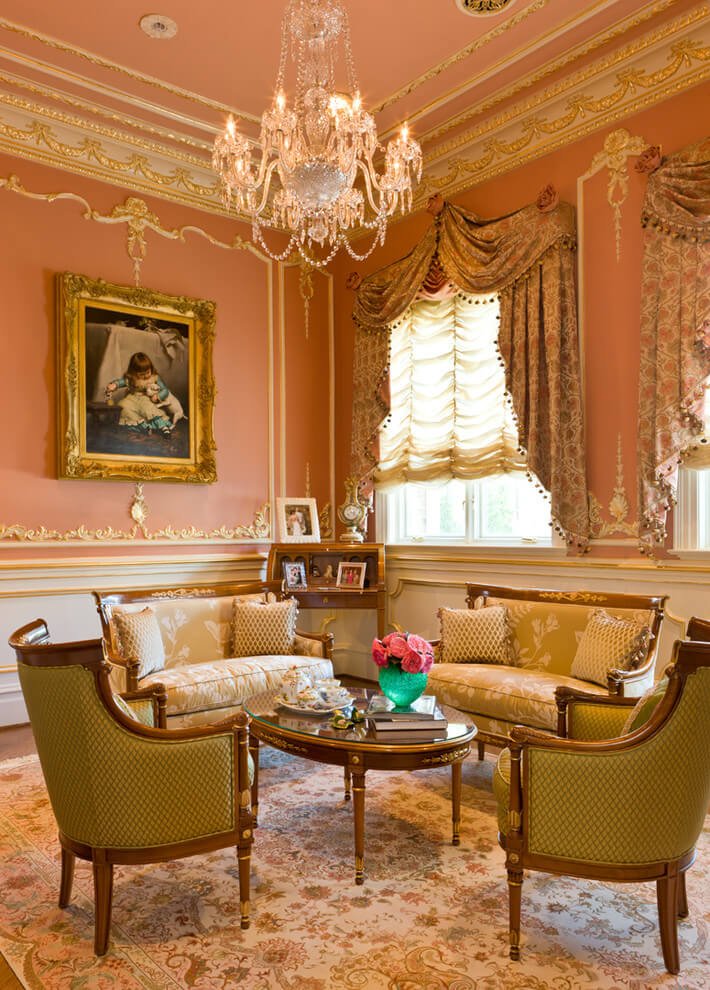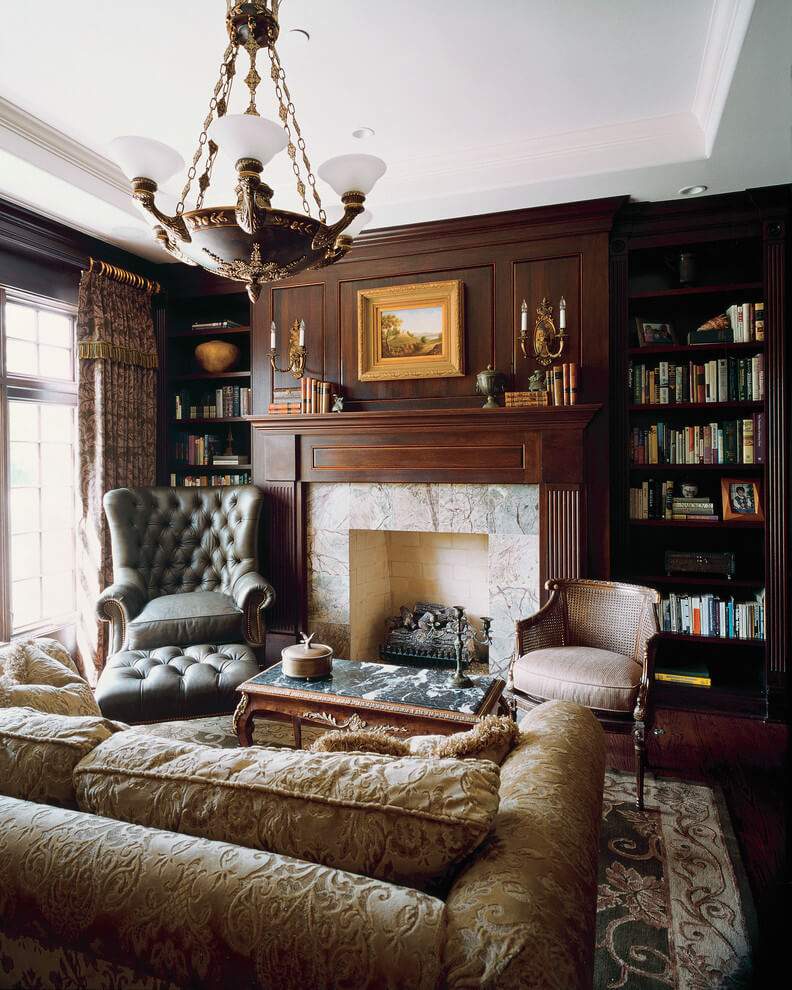The Opulence And Elegance Of Victorian Era Home Decor
The Opulence and Elegance of Victorian Era Home Decor
Related Articles: The Opulence and Elegance of Victorian Era Home Decor
Introduction
With great pleasure, we will explore the intriguing topic related to The Opulence and Elegance of Victorian Era Home Decor. Let’s weave interesting information and offer fresh perspectives to the readers.
Table of Content
The Opulence and Elegance of Victorian Era Home Decor

The Victorian era, spanning from 1837 to 1901, was a period of significant social, economic, and technological change. This era witnessed a burgeoning middle class, increasing prosperity, and a growing appreciation for the arts and craftsmanship. These factors profoundly influenced the way homes were designed and decorated, giving rise to a distinct and enduring style that continues to inspire interior designers today.
The Evolution of Victorian Decor:
Victorian home decor evolved over the course of the era, reflecting changing tastes and influences. Early Victorian styles, known as "Gothic Revival" or "Romantic Revival," drew inspiration from medieval architecture and design. This period saw the use of heavy, dark wood furniture, intricate carvings, stained glass windows, and tapestries, creating a dramatic and somewhat somber atmosphere.
As the Victorian era progressed, the emphasis shifted towards a lighter and more ornate style, known as "High Victorian" or "Mid-Victorian." This period saw the rise of opulent and elaborate furnishings, including plush velvet upholstery, intricate floral patterns, and gilded accents. The use of bright colors, particularly reds, greens, and blues, was prevalent, creating a sense of richness and grandeur.
The later Victorian era, known as "Late Victorian" or "Aesthetic Movement," embraced a more refined and understated approach. This period saw the use of lighter colors, natural materials, and simpler forms, reflecting a growing interest in Japanese and Oriental influences. The focus shifted from pure ornamentation to functional design, incorporating elements of Arts and Crafts movement ideals.
Key Elements of Victorian Home Decor:
1. Furniture:
Victorian furniture was characterized by its craftsmanship, intricate details, and heavy construction. Common pieces included:
- Sofa: Large and plush, often upholstered in velvet or brocade with ornate carvings and tufted buttons.
- Armchair: Similar to the sofa, with high backs and elaborate armrests.
- Sideboard: A large, freestanding piece used for serving food and displaying china.
- Wardrobe: Large and ornate, often with mirrored doors and intricate carvings.
- Writing Desk: A functional piece with elaborate details, often featuring a leather top and brass accents.
- Chest of Drawers: A versatile piece used for storing clothing and other items.
2. Textiles:
Textiles played a significant role in Victorian home decor, adding warmth, color, and texture to the interior. Common fabrics included:
- Velvet: Used for upholstery, curtains, and decorative throws.
- Brocade: A richly woven fabric with intricate patterns, used for upholstery and curtains.
- Damask: A patterned fabric with a raised design, often used for tablecloths and napkins.
- Lace: Used for curtains, tablecloths, and decorative trims.
- Chintz: A printed cotton fabric with floral or geometric patterns, used for upholstery, curtains, and bedding.
3. Wall Coverings:
Victorian walls were often adorned with elaborate wallpaper, creating a sense of opulence and grandeur. Common patterns included:
- Floral: Large, bold floral patterns in vibrant colors.
- Geometric: Intricate geometric patterns, often incorporating repeating motifs.
- Damask: Raised patterns with a luxurious sheen.
- Scenic: Wallpapers depicting landscapes, historical scenes, or fantastical imagery.
4. Lighting:
Victorian lighting was both functional and decorative, with a wide range of styles available:
- Chandelier: Elaborate chandeliers made of crystal, brass, or silver, often with multiple tiers and candle-like bulbs.
- Sconce: Wall-mounted fixtures with decorative arms and shades.
- Table Lamp: Ornate lamps with decorative bases and shades, often used on side tables or desks.
- Gaslight: Gas lamps were commonly used for outdoor and indoor lighting, providing a warm, yellow glow.
5. Color Palette:
Victorian color schemes were bold and vibrant, often incorporating rich hues like:
- Red: Used for upholstery, rugs, and wall coverings.
- Green: Used for furniture, curtains, and decorative accents.
- Blue: Used for upholstery, curtains, and wall coverings.
- Gold: Used for decorative accents, furniture trim, and lighting fixtures.
6. Accessories:
Victorian homes were filled with a variety of decorative accessories, adding personality and character to the interior:
- Paintings: Oil paintings, watercolors, and engravings depicting landscapes, portraits, and historical scenes.
- Sculptures: Ornamental sculptures made of marble, bronze, or plaster.
- Vases: Ornate vases made of porcelain, ceramic, or glass, used for displaying flowers or other decorative objects.
- Clocks: Elaborate clocks with intricate carvings and decorative details.
- Mirrors: Ornate mirrors with gilded frames and decorative accents.
The Importance of Victorian Home Decor:
Victorian home decor reflected the values and aspirations of the era, prioritizing comfort, opulence, and a sense of refined living. It served as a visual representation of social status and personal taste, showcasing the wealth and sophistication of the homeowner. The intricate craftsmanship and attention to detail showcased the skills of artisans and designers, contributing to the development of unique and enduring design traditions.
FAQs on Victorian Era Home Decor:
Q: What is the most common Victorian style?
A: While several styles emerged within the Victorian era, the "High Victorian" or "Mid-Victorian" style, characterized by its opulent and elaborate furnishings, vibrant colors, and intricate details, is often considered the most representative of the period.
Q: How can I incorporate Victorian elements into my modern home?
A: You can incorporate Victorian elements into your modern home by using key design principles such as rich colors, patterned fabrics, intricate details, and ornate furniture pieces. However, it is important to use these elements in a balanced and contemporary way, avoiding an overly cluttered or dated look.
Q: What are some tips for decorating a Victorian-style home?
A: Here are some tips for decorating a Victorian-style home:
- Choose a color palette: Start with a rich color palette, incorporating deep reds, greens, blues, and golds.
- Embrace patterns: Use patterned fabrics like velvet, brocade, damask, and chintz for upholstery, curtains, and decorative accents.
- Incorporate ornate furniture: Choose furniture with intricate carvings, tufted buttons, and elaborate details.
- Add decorative accessories: Use paintings, sculptures, vases, clocks, and mirrors to add personality and character to the interior.
- Consider lighting: Use chandeliers, sconces, and table lamps to create a warm and inviting atmosphere.
- Focus on details: Pay attention to details like door hardware, window treatments, and decorative trims.
Conclusion:
Victorian era home decor stands as a testament to the era’s unique blend of opulence, craftsmanship, and cultural influences. Its enduring appeal lies in its ability to create a sense of warmth, grandeur, and timeless elegance. Whether you are seeking to recreate the grandeur of a bygone era or simply incorporate a touch of Victorian charm into your modern home, understanding the key elements and design principles of this distinctive style offers a wealth of inspiration for creating a truly unique and memorable interior.








Closure
Thus, we hope this article has provided valuable insights into The Opulence and Elegance of Victorian Era Home Decor. We appreciate your attention to our article. See you in our next article!
You may also like
Recent Posts
- Shaping The Homes Of Tomorrow: Home Decor Trends For 2025
- Navigating The Evolving Landscape Of Home Decor Trends: A Comprehensive Guide
- Weaving History And Home: A Guide To Unique Vintage Farmhouse Decor
- The Enduring Appeal Of Wooden Duck Home Decor: A Timeless Symbol Of Nature And Serenity
- Beyond The Ordinary: A Guide To Unique Home Decor Accessories
- Navigating The Fast Fashion Landscape: Exploring Alternatives To SHEIN
- A Global Network Of Home Improvement: The Reach Of The Home Depot
- Finding The Perfect Pieces: A Guide To Home Decor Shopping
Leave a Reply